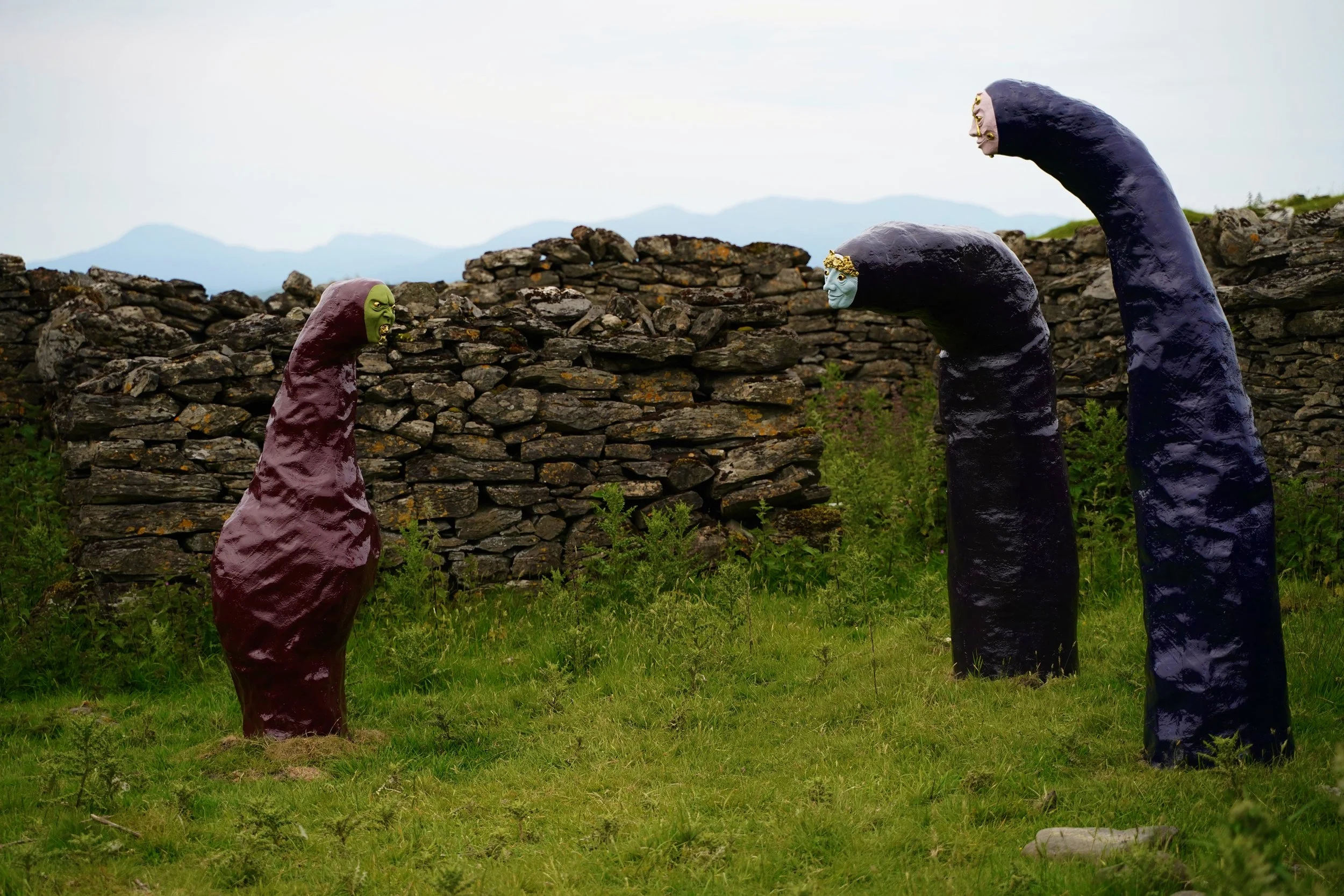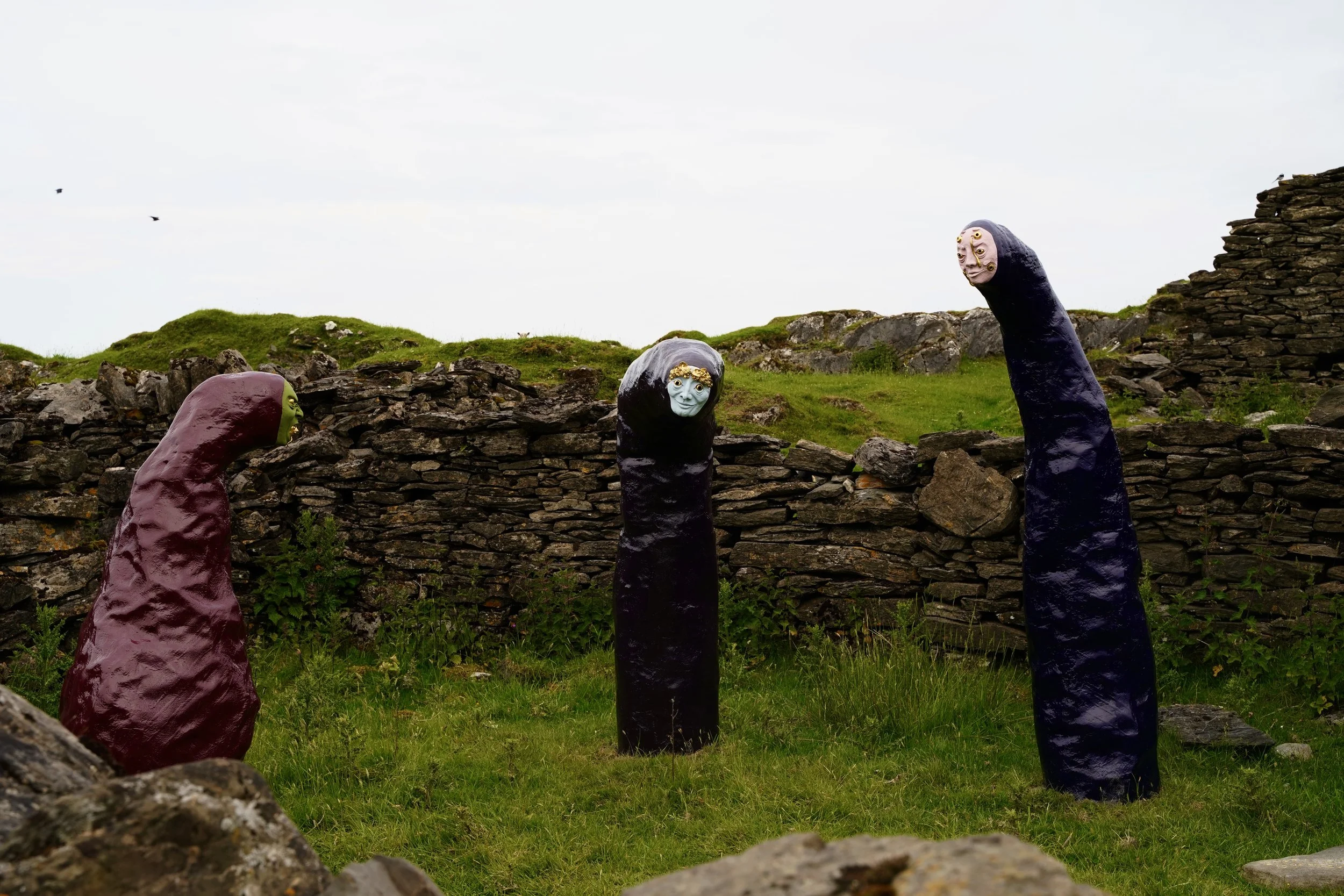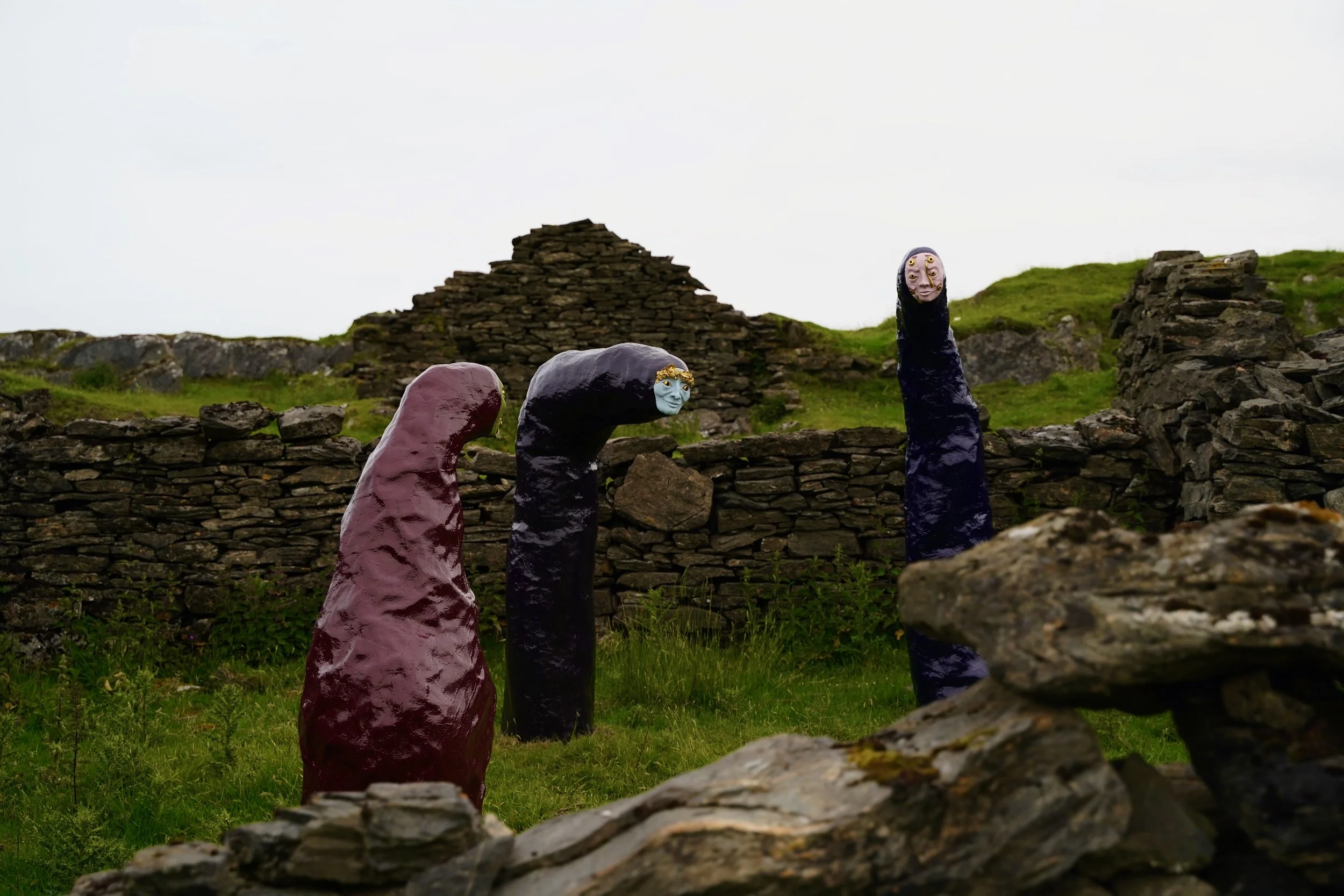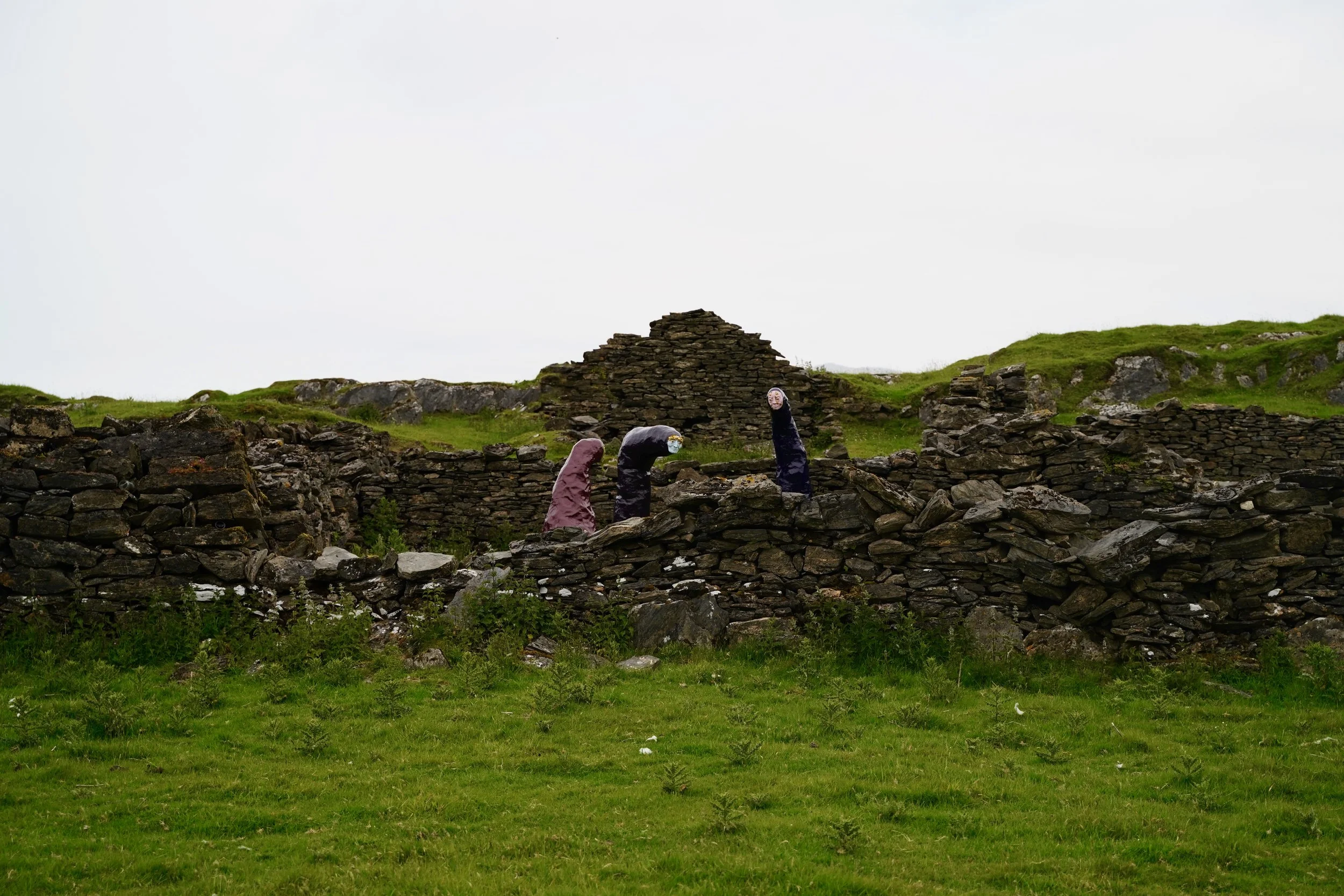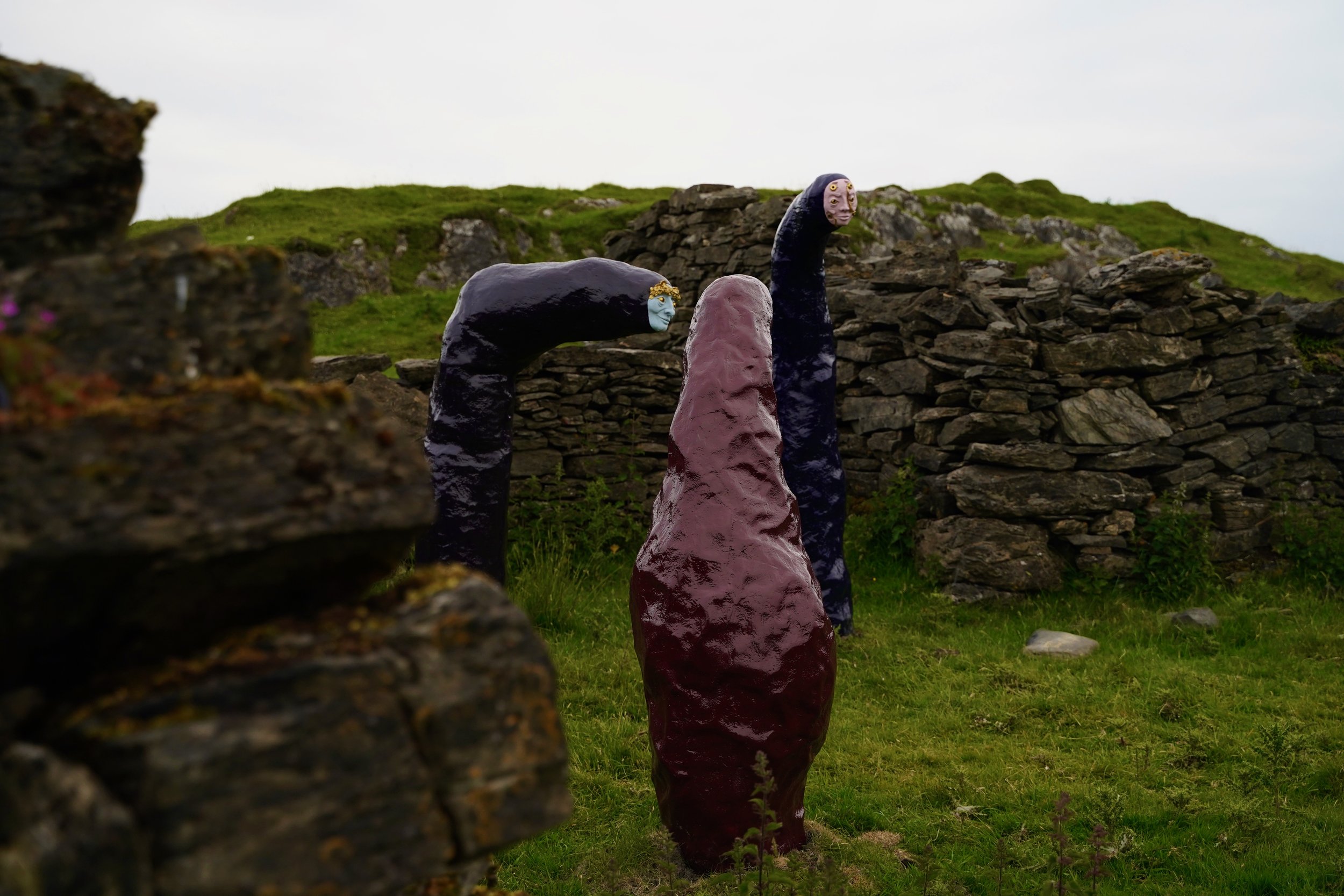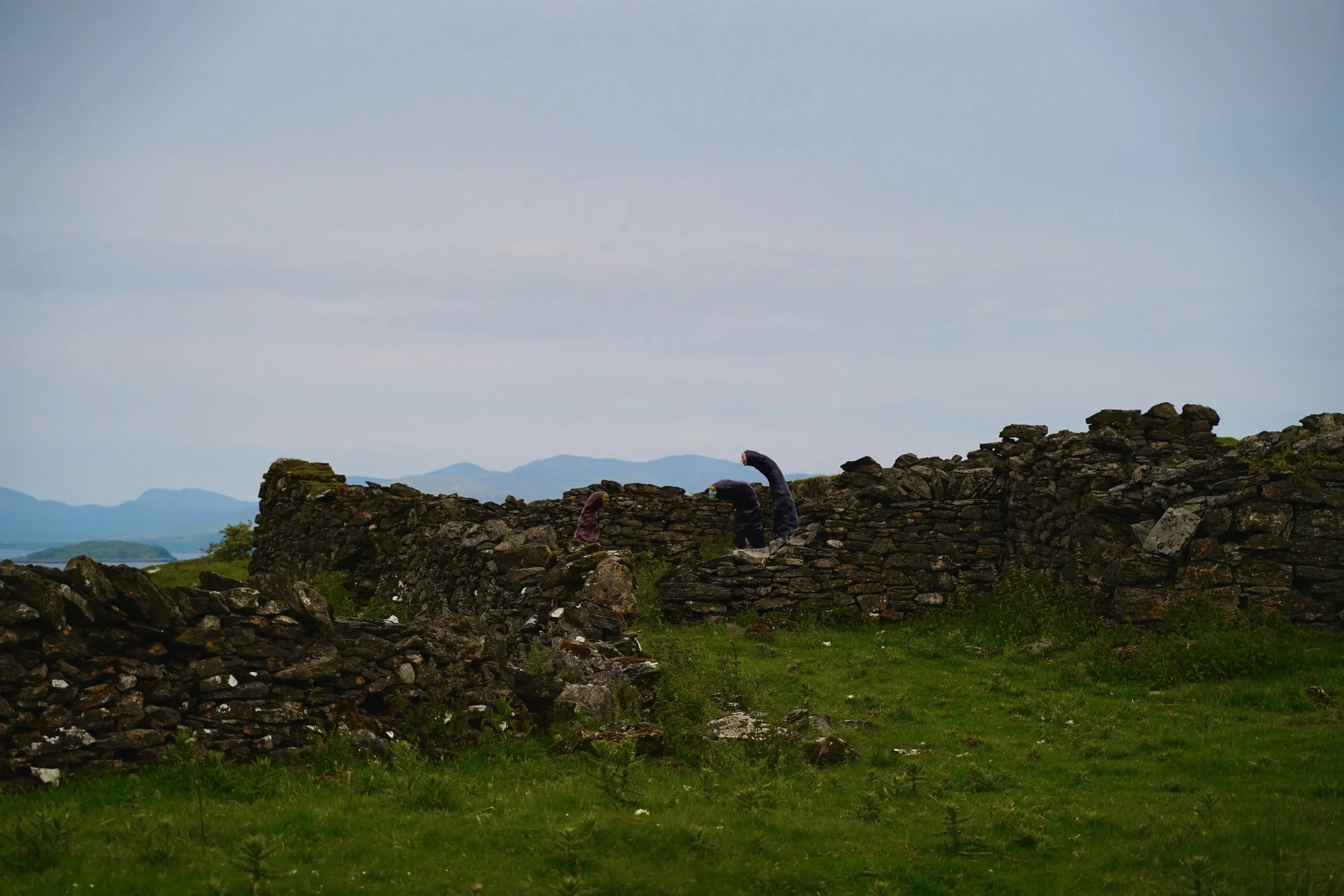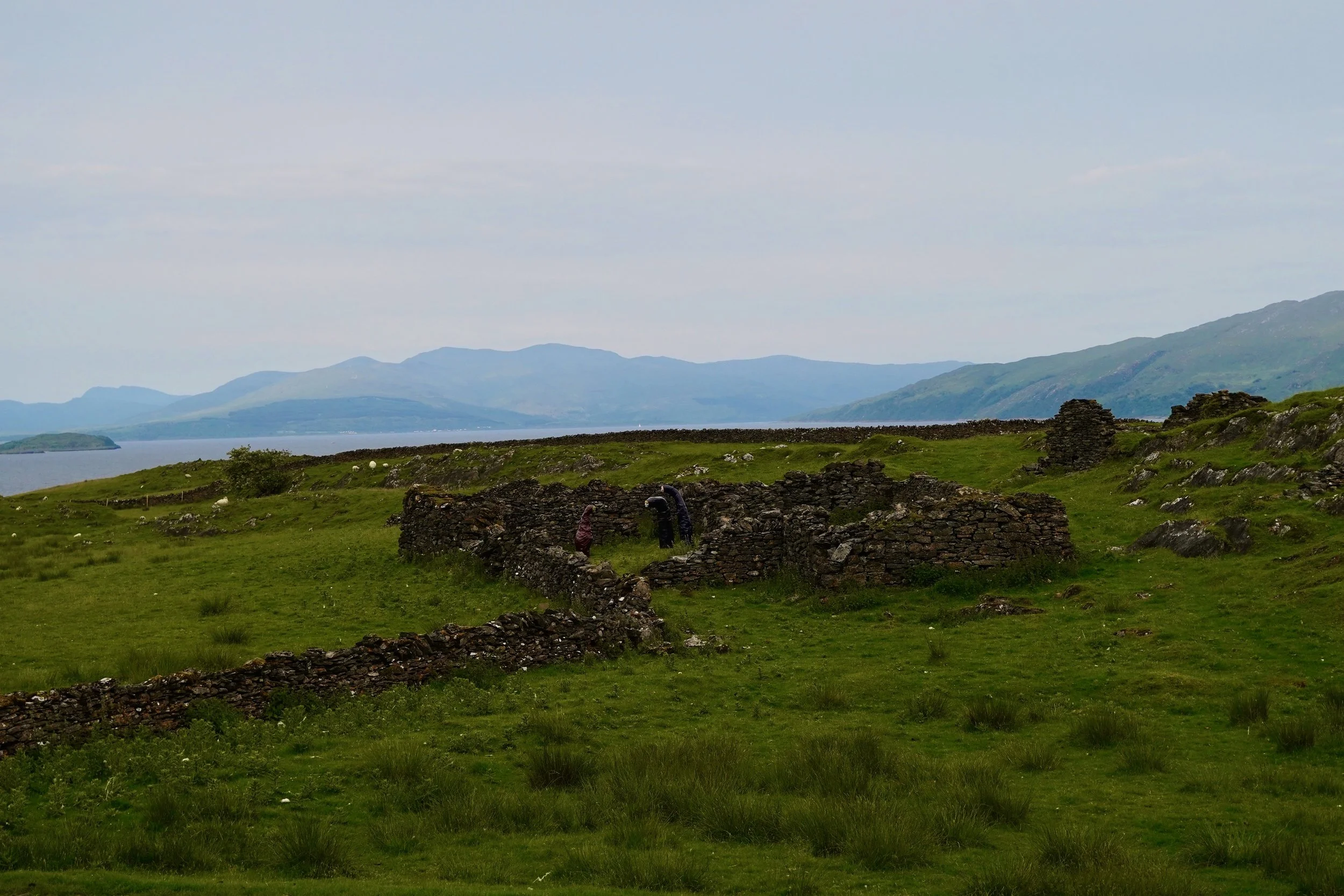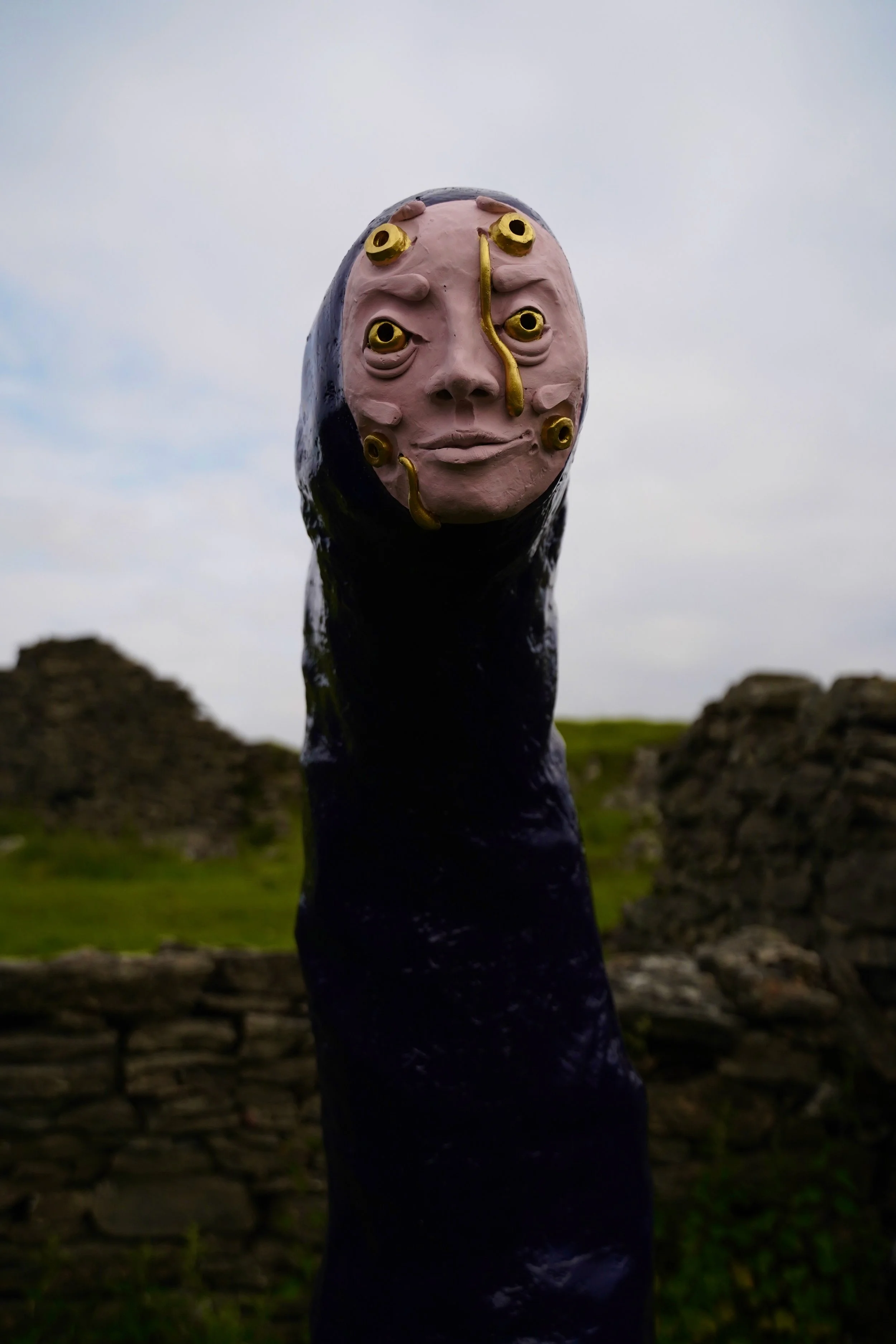Empty Houses
About the Project
The Empty Houses sculptural installation is a dynamic and mobile artwork that is responsive to the diverse contexts of each new location it inhabits. The installation is comprised of figurative sculptures, each representing an individual with a unique narrative that relates to the theme of access to housing and work in rural communities in the highlands and islands. These narratives encompass both historical and contemporary perspectives, lending a nuanced and multifaceted dimension to the installation's thematic resonance.
The installation's purpose is to revitalize and reinvigorate depopulated spaces in rural communities by imbuing them with the presence and stories of the sculptures' subjects. The creator initially conceived of the installation in response to the issue of depopulation that plagues the Isle of Lismore, which is a significant problem for numerous communities in the highlands and islands. The population of Lismore has decreased drastically over time, with only approximately 175 inhabitants presently residing on the island, compared to 1500 individuals in 1831. While the depopulation of the highlands and islands is commonly considered a historical concern, it is pertinent to acknowledge that accessing land, affordable housing, and employment in rural areas remains a formidable barrier for these communities, impeding their population sustainability and growth.
The Empty Houses installation aims to foster contemplation around how these problems' historical underpinnings have evolved to manifest as contemporary challenges that rural communities face today. By sensitising viewers to the lived experiences of the individuals represented by the sculptures, the installation engenders a deeper understanding of the complex structural issues that affect rural communities, spurring reflection on potential solutions and pathways towards equitable change.
The Figures and Their Stories
More About the Project
Why is it important to make a project about depopulation?
I first created Empty Houses in the community I live in on the Isle of Lismore. Depopulation is a serious problem facing the island, just as it is for many other communities around the highlands and islands. In 1831 Lismore had a population of 1500 people (R. Hay, 2013, p.9), whereas today the population sits at about 175. The depopulation of the highlands and islands is often thought of as a historic issue however, access to land, affordable housing, and work in rural areas are still major obstacles faced by these communities, and present very real difficulties for population sustainment and growth. I hope that this installation will encourage people to think about how the historical roots of these problems have evolved to form today's obstacles that are now being faced by rural communities.
When looking at the causes of depopulation of the Highlands and Islands it is often attributed to events such as the Highland Clearances, the industrial revolution, the highland potato famine, and the rise of emigration (Hay, R., 2009, p.113). At the heart of all these events lies the central issue of inhabitants lacking access to land, stable work, accommodation, and resources, the result of which both pushed and pulled rural Highland inhabitants to relocate to new areas. (Hay, R.,2009, p.126-147).
In Grey's Scottish Population Statistics, he states that the country's population grew more than threefold between 1801 and 1951 (Gray, J., 1952, p.17). However in rural areas of the Highlands and Islands communities saw very sharp declines in populations, a trend which is continuing today. Population statistics from several islands in the Argyle region show that in 1831 the Isle of Mull had a population of 10,638 (Explore Scotland, 2023, Web.), whereas the 2021 census recorded its population at 3,000. In 1841 Tiree was reported to have a population of 4,687 (Mackenzie, A., 1914, p.228), whereas today its population is considered to be around 653. Islay was said to have had a peak population of around 15,000 in 1831 (Islay dot Scot, 2022, Web.) whereas today its population sits at around 3,000. On the isle of Lismore where I live, the population peaked at 1,500 in 1831 (R. Hay, 2013, p.9) and now sits at around 162 (Rural Housing Scotland, 2021, p.12). Data from the national record of Scotland indicates that in 2001 the population of Argyle was 91,300, in 2021 it was 86,220, and it has been projected that in 2028 the population will be 81,197, (National Records of Scotland, 2022, Web.) however, Webster's Census indicated that at its height in 1831, Argyle had a population of 100,973 (Gray, J., 1952, p.85).
I became interested in the impact of depopulation in this region after I moved to the Isle of Lismore in 2020 and witnessed the negative impact depopulation was having on the community. In the 2021 Rural Housing Feasibility Study Report for the Lismore Community Trust, it stated that Lismore like many parts of rural Scotland faces several challenges if it is to remain a thriving, and sustainable community. The 2021 Rural Housing Feasibility Study Report for the Lismore Community Trust stated that central to these challenges is the repopulation of rural areas and that this repopulation would rely on access to land, and opportunities for high-quality, diverse employment. The 2021 Rural Housing Feasibility Study Report for the Lismore Community Trust went on to share projections that Argyle and Bute, in which Lismore is located, will see depopulation of around 10% between 2016- 2041, particularly among younger age groups, and it is recognized that, with exceptions, islands tend to suffer worst. Lismore's population has dropped from 192 in 2011 to around 162 today and over 26% of the population is aged over 70. (Rural Housing Scotland, 2021, p.8).
The 2021 Rural Housing Feasibility Study Report for the Lismore Community Trust went on to state that the lack of suitable affordable housing on the island, and the impact of this on the future sustainability of Lismore, has been a concern for some time (Rural Housing Scotland, 2021, p.11) meaning
that a lack of access to affordable housing is a key contributing factor to depopulation on the island. Since moving to the island I have seen several families and individuals stuck in situations where they no longer had access to any living accommodations, which then lead to them having to leave the island. This situation is incredibly sad as the community is full of uninhabited homes. The 2021 Rural Housing Feasibility Study Report for the Lismore Community Trust stated that 58 of the 143 dwellings on the island (40.55%) are not in permanent occupation, 15 are holiday lets, 25 are second homes, and 11 are vacant (Rural Housing Scotland, 2021, p.12). It was this dynamic that lead to me titling the project Empty Houses.
I have gathered some numbers from observing the community on Lismore. These statistics are unofficial and have only come from what I have seen and heard within the community, but they are important to share. Since May 2022, 9 full-time residents of the island moved away as they lost access to their housing and could not find any alternative accommodation, and 9 full-time island residents have moved away from the island lack of access to work. I believe that for an island with a population of around 175, the loss of 18 community members due to issues with access to housing and employment over a year, is alarming, and is an issue worth talking about. This community-wide conversation is exactly what I had hoped to initiate through the Empty Houses project.
References
Explore Scotland. (2023) History of Mull. Web. Available at: https://www.isle-of-mull.net/attractions/history/history-of-mull/. (Accessed 15th April 2023).
Gray, J. (1952). Scottish Population Statistics including Webster’s Analysis of Population 1755. Edinburgh: T. and A. Constable LTD.
Hay, R., (2013). How an Island Lost its People. Lewis: The Island Book Trust.
Hay, R. (2009). Lismore the Great Garden. Glasgow: Bell & Bain Limited.
Islay dot Scot. (2022). Islay People. Web. Available at: https://islay.scot/islay-people/. (Accessed 7th April 2023).
Mackenzie, A., (1914). The History of the Highland Clearances, Argyllshire – The Isle of Mull. Glasgow: P.J. O'Callaghan.
National Records of Scotland. (2022). Argyle and Bute Council Area Profile.Web. Available at: https://www.nrscotland.gov.uk/fles/statistics/council-area- data-sheets/argyll-and-bute-council-profle.html#tables. (Accessed 7th April 2023).
Rural Housing Scotland, (2021). Afordable Housing, Lismore, Feasibility Study Report for Lismore Community Trust. Web. Available at: https://ruralhousingscotland.org/home/oih/guide/argyll-bute- social-housing/isle-of-lismore. (Accessed 3rd March 2022).
Acknowledgements
I express my gratitude to Archie and Inna McColl for their generous contribution in hosting the Empty Houses installation on their land situated in Lismore. Furthermore, I extend my appreciation to Arthur Cross for accommodating the sculptures while working on the land. I would also like to acknowledge the Ardchattan Centre for serving as the second venue for the installation.
I would like to pay homage to the late Domhnall MacIlleDuibh (Donald Black), who shared his captivating stories and recollections of Lismore in his book titled "A Tale or Two from Lismore." In addition, I express my appreciation to Robert Hay for sharing his knowledge and research through his books, "Lismore: The Great Garden" and "How an Island Lost Its People." All of these books are available at the island's heritage centre.
Lastly, I extend my gratitude to The Hope Scott Trust and Curator Space for their funding contributions towards this project.
